| SEO Metadata |
|---|
| keywords | System Architecture, Resilience |
|---|
|
JS7 offers a resilient system architecture that allows to continue operation in case of outages |
...
Introduction
- The system architecture explainsdescribes:
- system boundaries
- componentsproducts
- platforms
- setup scenarios
| Anchor |
|---|
| system_architecture |
|---|
| system_architecture |
|---|
|
System Architecture- Download: JS7_JobScheduler_System_Architecture.pdfpptx
- Download: JS7_JobScheduler_System_Architecture.pptxDownload from above links should display of the below document not work for your browser:
| Office Powerpoint |
|---|
name | pdf - Use the links above if the document below does not display in your browser.
| PDF |
|---|
| name | JS7_JobScheduler_System_Architecture. |
|---|
|
...
Explanations
System Architecture
JS7 includes the following products:
- The JOC Cockpit, which is used to manage the JS7 - Inventory of scheduling objects, to monitor and control workflow execution and to access the JS7 - History.
- The Controller, which is used to orchestrate Agents, to pass orders for workflow execution to Agents and to deploy workflows and the JS7 - Daily Plan to Agents.
- Agents, which are dedicated to a Controller and are used to execute workflows and jobs. Agents act autonomously for workflows that execute all included jobs with the same Agent.
All JS7 products can be clustered:
- JOC Cockpit and Controller can each implement a passive cluster with an active node and a standby node.
- Agents can be operated standalone or as instances of a JS7 - Agent Cluster which implements active-passive or active-active scheduling.
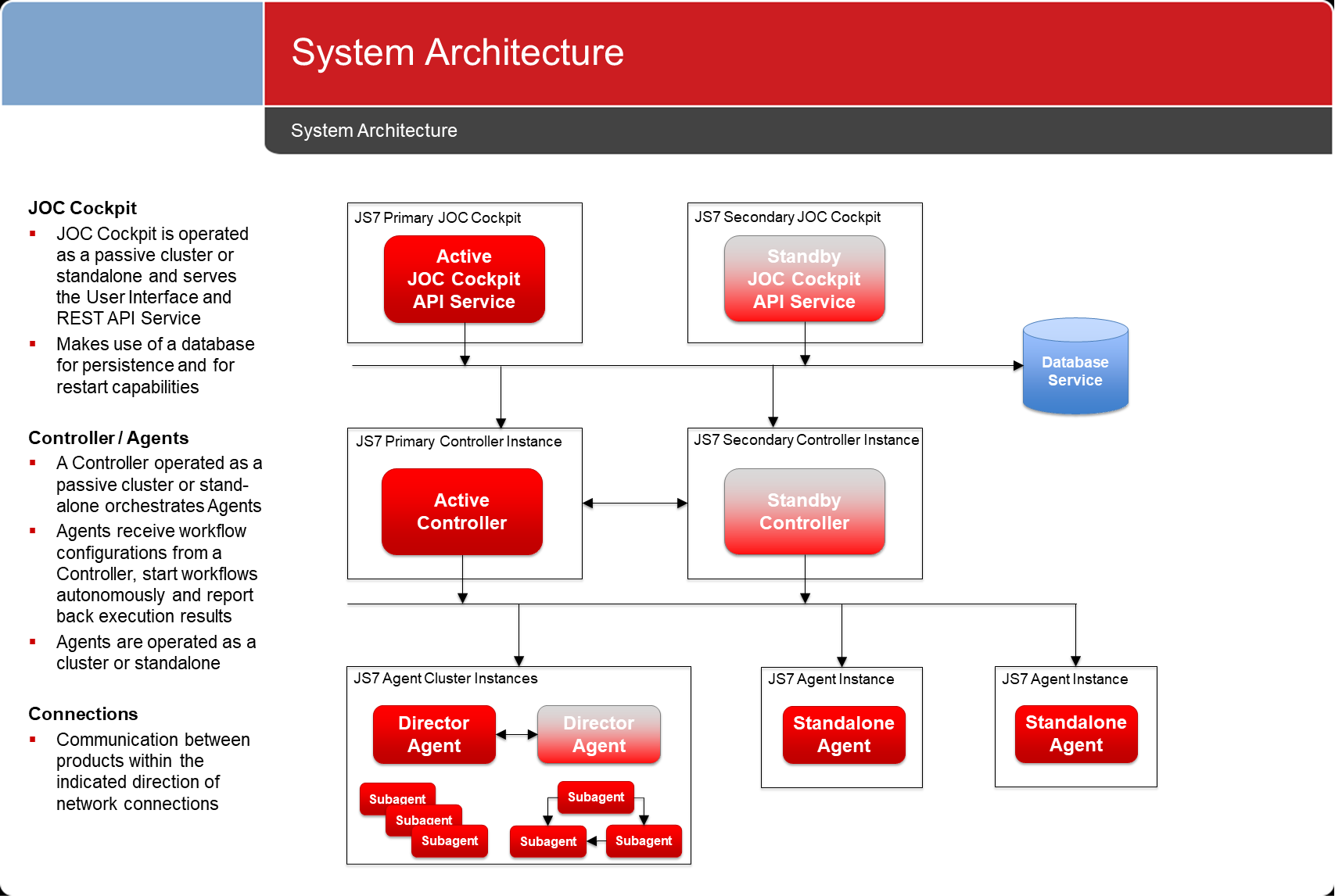 Image Added
Image Added
ProductsThe products interact as described in the slide below:
- The JOC Cockpit implements:
- the user interface for browser access.
- the JS7 - REST Web Service API which:
- is connected to a database and which persistently stores the inventory and the history of workflow executions,
- performs all operations for managing Controllers,
- optionally is available from dedicated API Servers.
- The Controller connects to Agents:
- The Agents:
- execute workflows and jobs,
- return execution results and log output to the Controller.
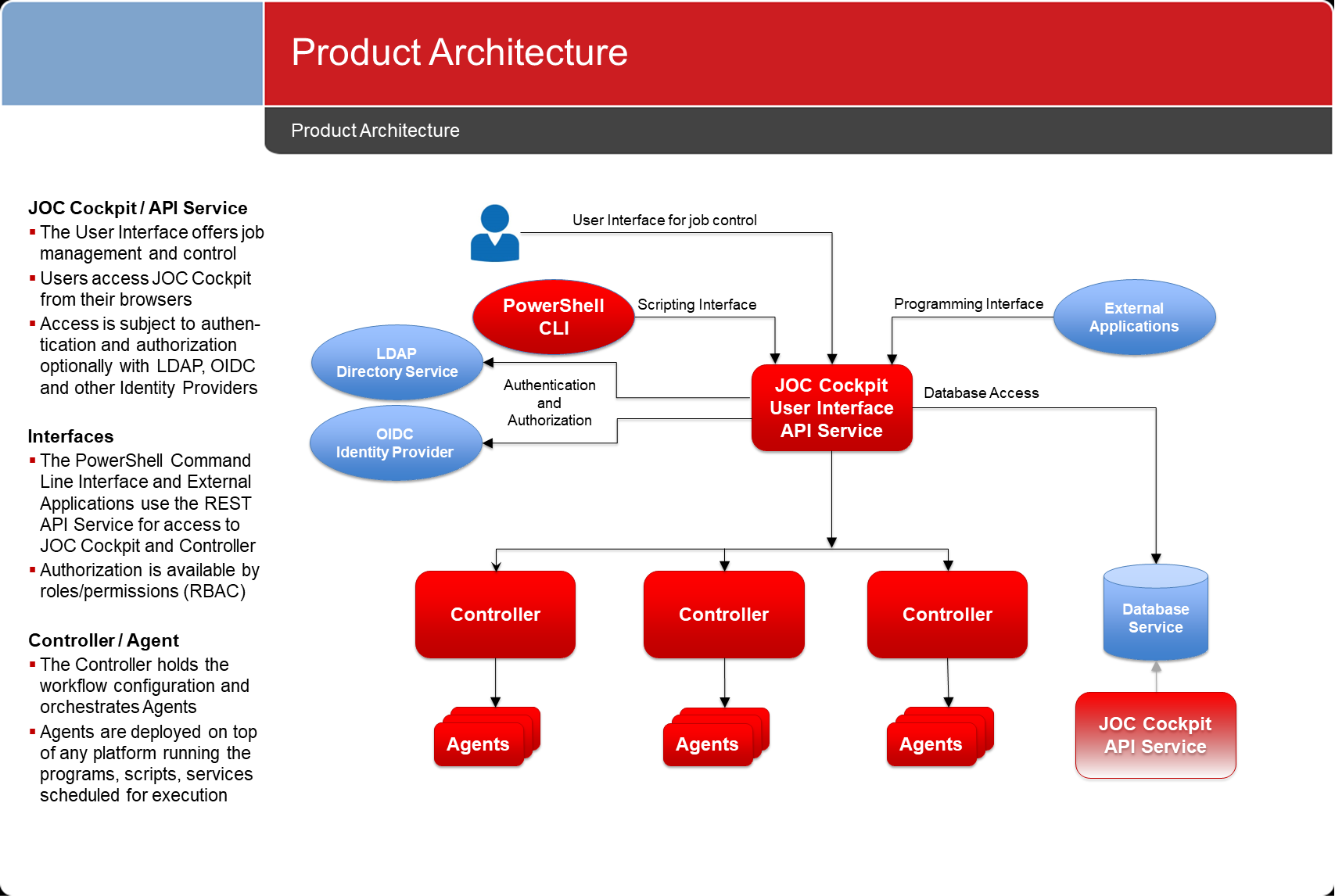 Image Added
Image Added
| Anchor |
|---|
| network_connections |
|---|
| network_connections |
|---|
|
Network ConnectionsNetwork connections are only established in the directions indicated.
- Any connections are unilateral.
- Connections can be secured by TLS/SSL certificates.
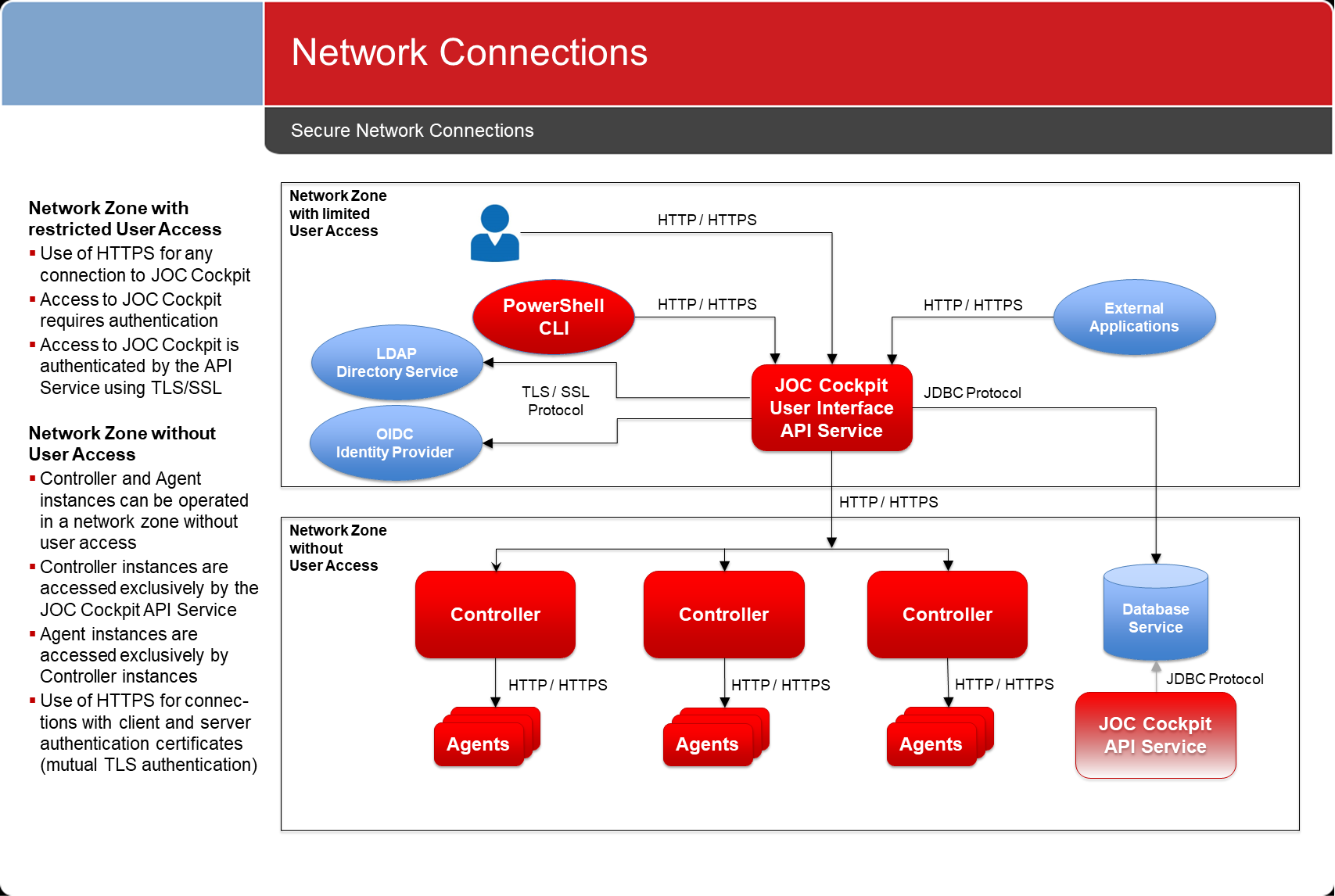 Image Added
Image Added
| Anchor |
|---|
| cluster_architecture |
|---|
| cluster_architecture |
|---|
|
Cluster ArchitectureThe JS7 offers a 4-tier architecture with any JS7 products available for clustering:
- Each tier acts as a Cluster Watch in case that the underlying tier requires an arbitrator to decide about the active/standby role.
- Each tier works asynchronously and does not rely on availability of the next tier. This includes absence of any single point of failure.
- The Agent Cluster is represented from both a Director Agent and any number of Subagents that execute tasks.
- This provides better autonomy to the Agent Cluster as Director Agents can be operated more close to Subagents in the network.
- Agent Clusters can execute workflows autonomously provided that jobs and dependencies map to Agents in the same cluster.
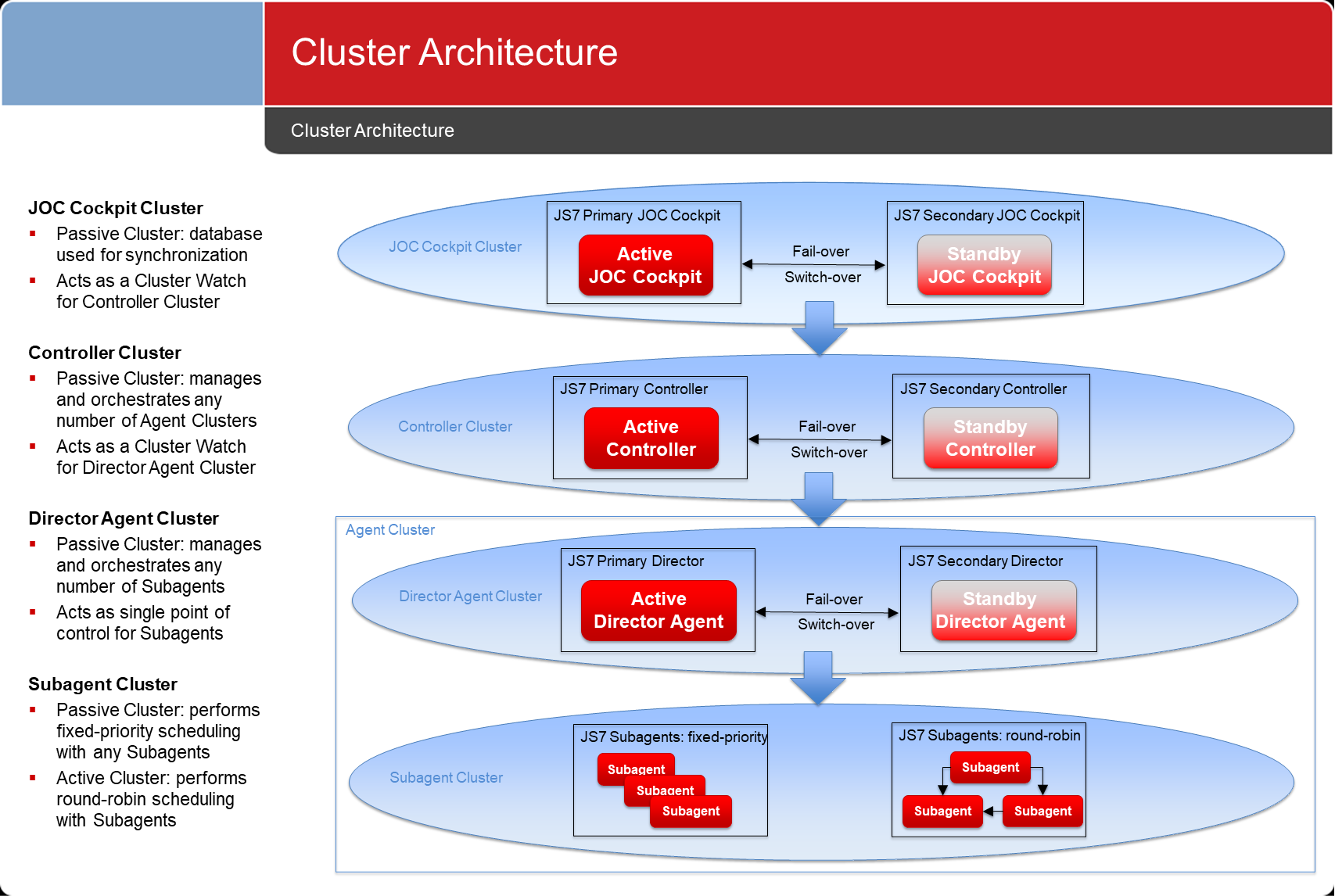 Image Added
Image Added
| Anchor |
|---|
| setup_scenarios |
|---|
| setup_scenarios |
|---|
|
Setup ScenariosConsider attached slides JS7_JobScheduler_System_Architecture.pdf for further setup scenarios.
Cloud Setup
A high availability setup includes to cluster JOC Cockpit, Controller and Agents. Products are deployed to separate availability zones like this:
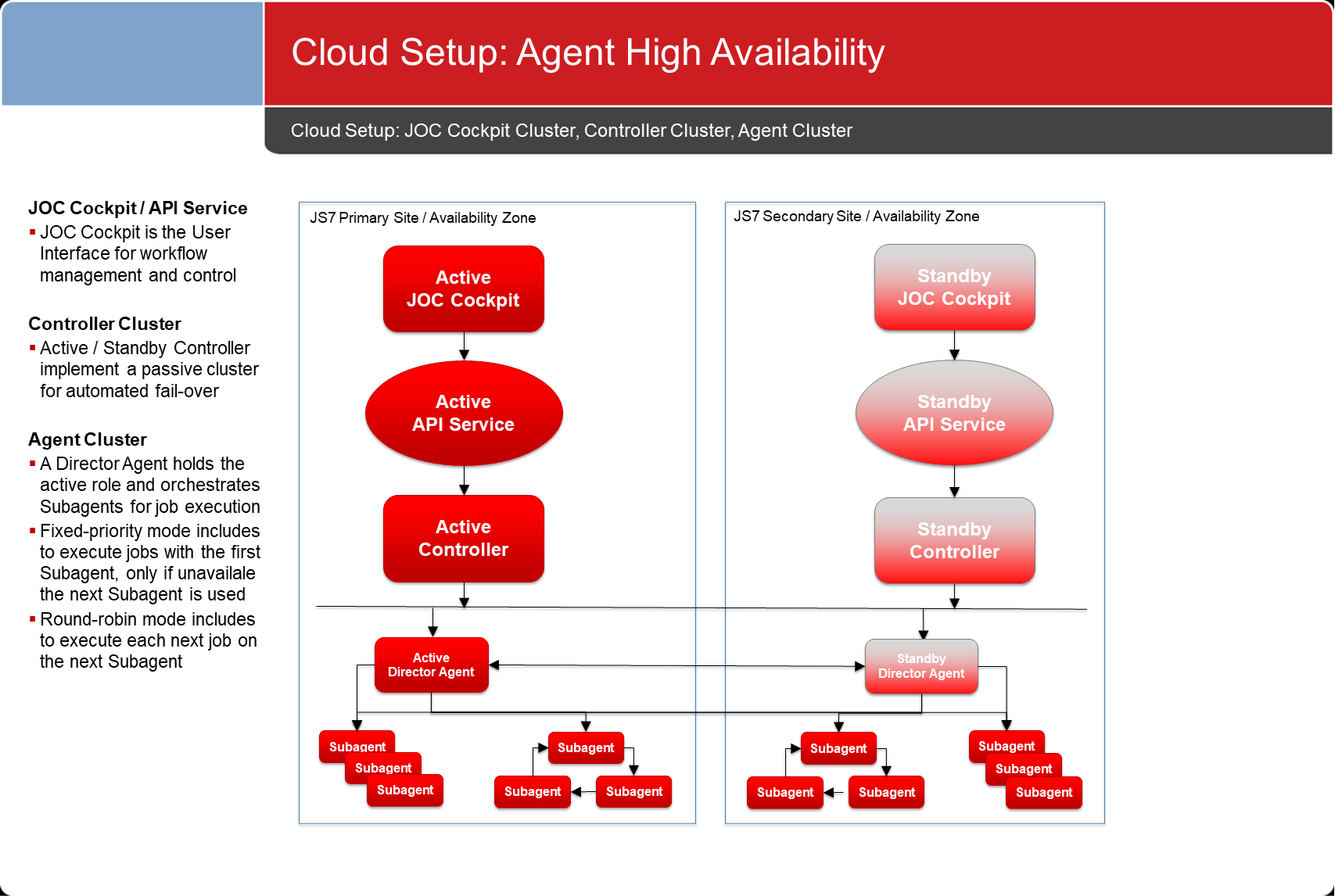 Image Added
Image Added
A hybrid approach suggests to use a cluster of JOC Cockpit instances and Controller instances from the Cloud. Agents can be integrated from the Cloud and from environments on premises:
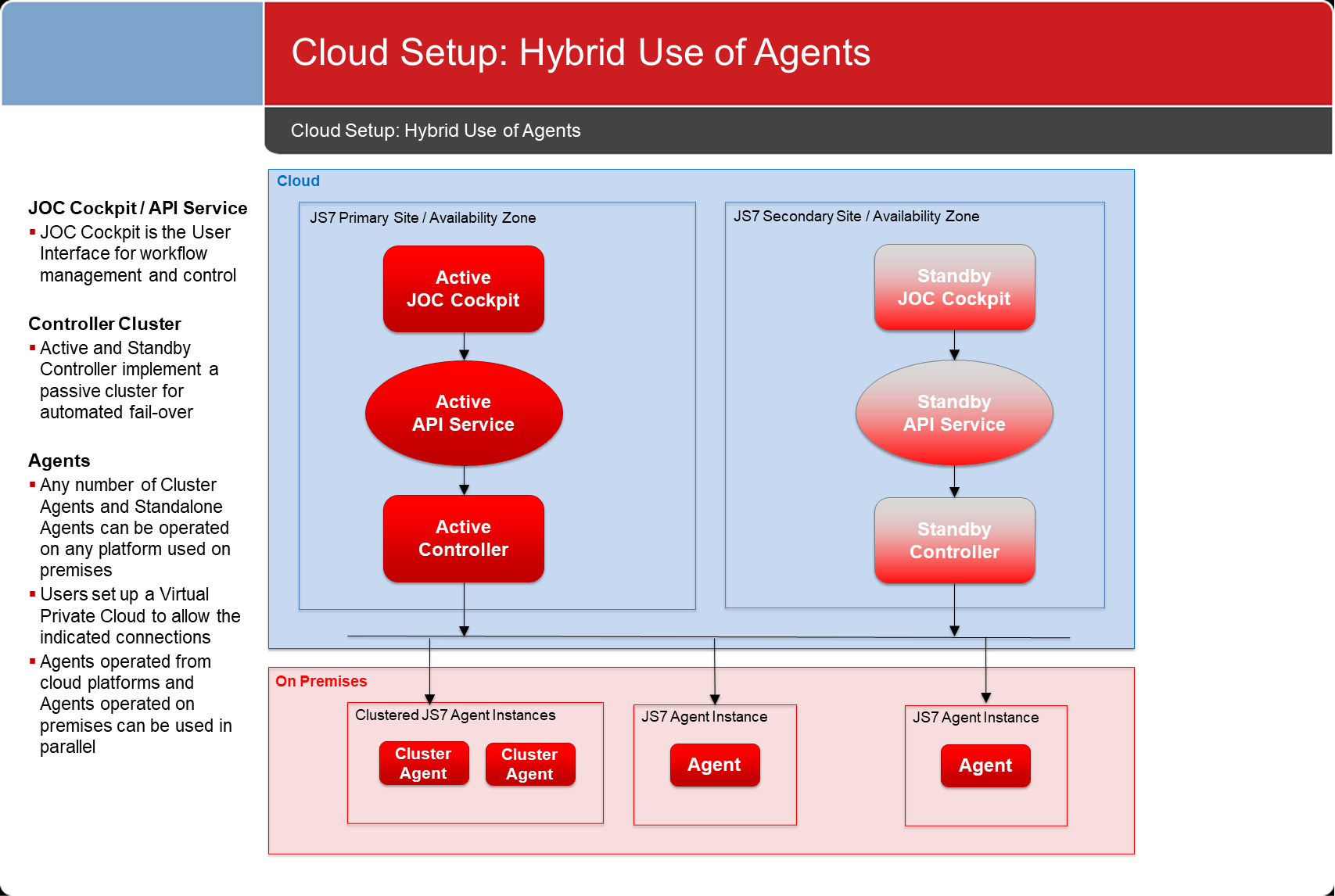 Image Added
Image Added
On Premises Setup
A cluster of JOC Cockpit instances and Controller instances can be used like this:
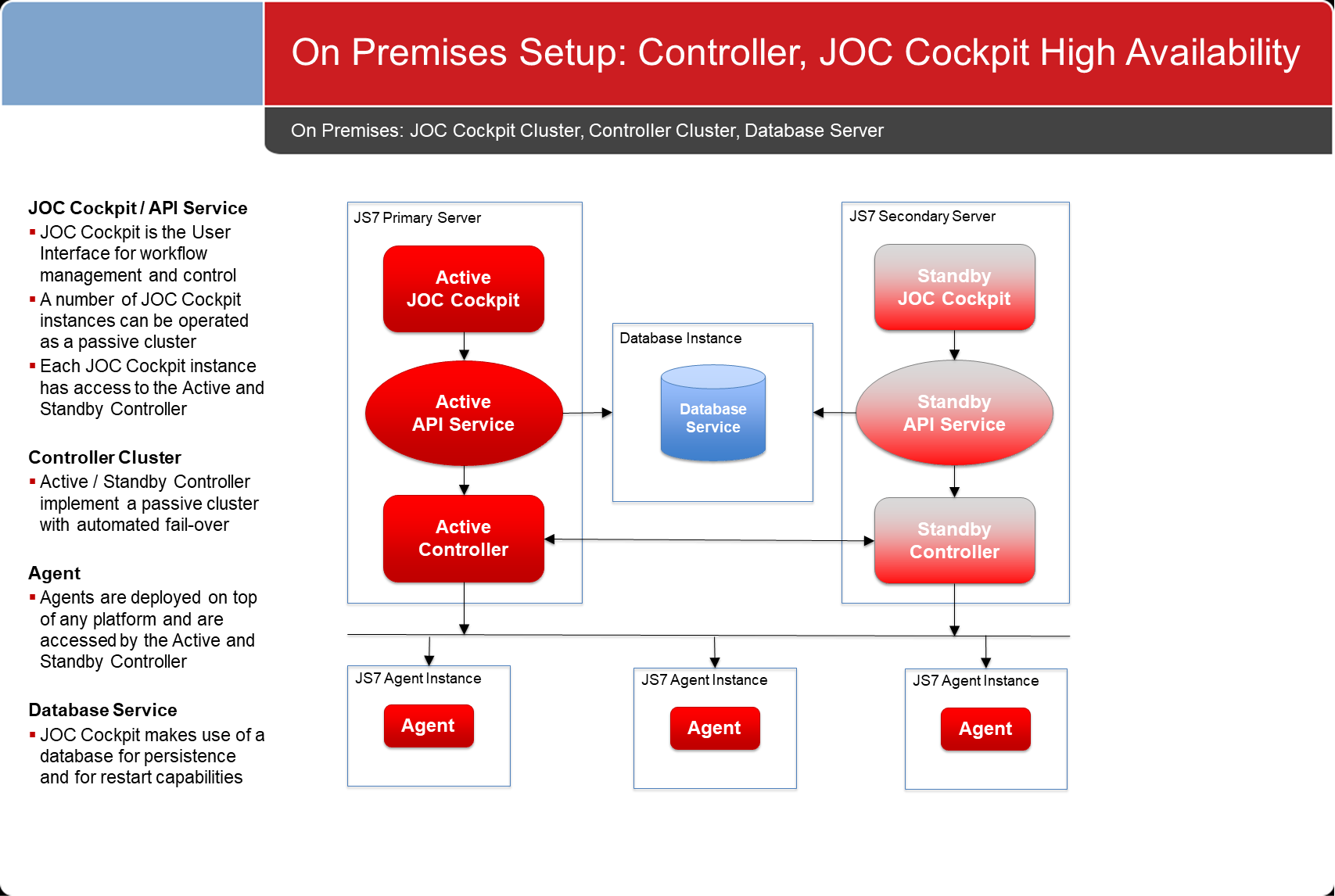 Image Added
Image Added
Standalone Agents can be used and clustered Agents can be used for high availability like this:
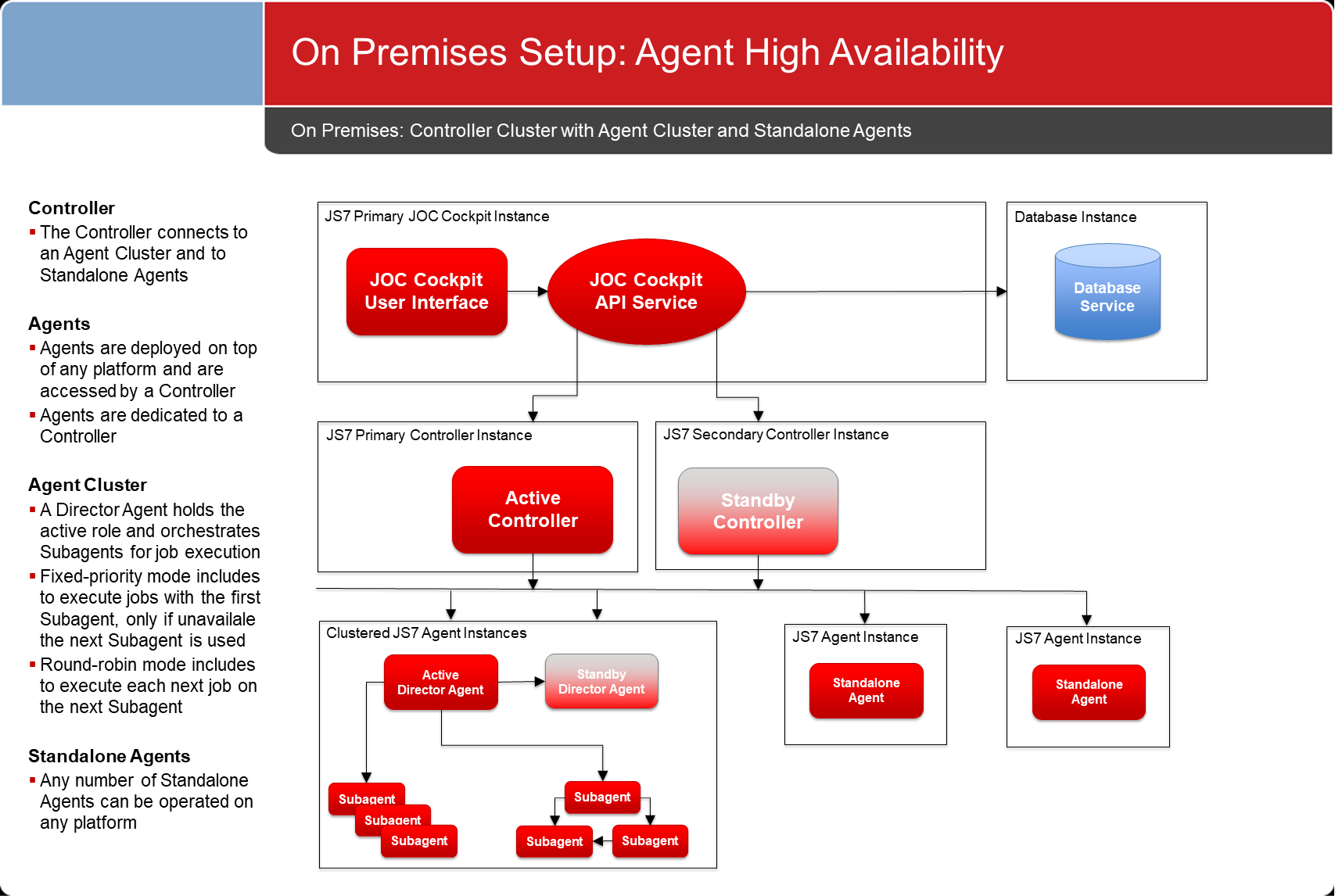 Image Added
Image Added
Summary
- Products
- JOC Cockpit: manages the workflow and job inventory, monitors and controls workflow execution
- Controller: orchestrates Agents, manages workflow execution
- Agents: start workflows autonomously and return the
Components- JOC Cockpit: manage configuration, monitor and control job execution
- Master: orchestrate Agents, manage job executions and state transitions
- Agents: execute jobs and return job execution history and log output
- OperationOperations
- JOC Cockpit can be operated in the following modes:
- as a single standalone instance,
- as an active-passive clustered instance with a primary instance and a backup instance,as an active passive clustered instance with a primary instance a cluster with one active instance and any number of backup standby instances.
- The Master Controller can be operated:
- as a single standalone instance,
- as an active-passive clustered instance with a primary instance and a backup instance,a cluster with one active instance and one standby instance.
- Agents can be operated:
- as a single instance,
- as an active-passive clustered instance with a primary instance and a backup instancea passive cluster with one active instance and any number of standby instances,
- as an active -active clustered instance cluster with any number of Agent active instances.
- Network Connections
- JOC Cockpit connects to a MasterController instances and connects to a database
- Masters Controllers connect to Agents
- Networks Network connections are firewall friendly, a single connection is initiated between componentsestablished between each product
- Platforms
- JOC Cockpit: Container, Linux, Windows
- Controller: Container, Linux, Windows
- Agent: Container, Linux, Windows, any platform that provides a Java Virtual Machine
- Setup Scenarios
- Basic Scenario
- High Availability Scenario
Multi Client Scenario- Cloud
- JOC Cockpit and Controller High Availability
- Agent High Availability
- Hybrid Use of Agents
- On Premises
- Standalone Server
- Controller High Availability
- Controller and JOC Cockpit High Availability
- Multi-Client Capability
- Agent High Availability
Further Resources







